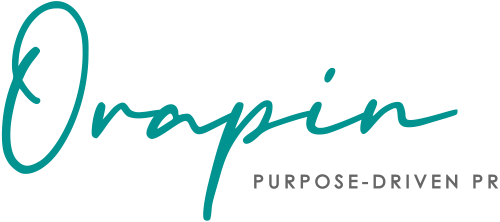
You wouldn’t start a road trip without a destination in mind.
You wouldn’t pull out of your driveway to start a fun road trip without first deciding where you were going, would you? If you just started driving you’d certainly end up somewhere, but how would you even know if it was really where you wanted to go? As a restauranteur, you wouldn’t open a new cafe without a menu. As a teacher, you wouldn’t start the school year without a lesson plan. (We could come up with analogies all day long, but you get the idea.) And to that end, you shouldn’t launch a PR program without a PR strategy either.
When we work with new clients, we always start our partnership with a deep dive into their business, brand attributes, goals, current strategies, and market opportunities. We want to make sure we are an extension of the team and understand our client’s business as if we were a long-term colleague. We use the information gleaned during this initial get-to-know-you phase to create a comprehensive and long-term PR strategy. It is our firm belief that creating a PR strategy, including clearly defined goals, KPIs to measure against those goals, media targets, and a solid messaging platform is a necessary foundation for any work to follow.
New client partners will sometimes ask why we can’t just get started with the pitching right away. We get it, they have exciting news to share and they want it to be out in the world yesterday. Timely news has value, and we certainly understand urgency, but as we said before, you wouldn’t start a road trip without knowing where you are going first.
“Suddenly, Michael realizes he doesn’t want creme brulee. He wants Jello.”
Ok, we were just looking for an excuse to insert a line from My Best Friend’s Wedding, but this idea leads us to our next point. Going through the exercise of creating a PR strategy is vitally important to make sure you know what you really want to get out of a PR campaign. At the end of the day, your PR program should support your business goals. Otherwise, what’s the point?
When people think of PR, they often think of high profile media coverage – TV spots, feature articles, and profile pieces in the local business journal. While high profile media coverage is all well and good, it may not be the best area of focus for a brand’s PR campaign. Often we start the exercise of creating a PR strategy, and a client will tell us they want one thing, such as an article on the front page of the New York Times, but once we really do a deep dive into the business’s marketing goals, we find that an expert positioning strategy that positions the CEO and company to become a sought after industry leader would actually be a much more effective way to reach the goals they want to achieve.
Avoiding the “Now what?” moment
We hate to say it, but it has happened to us a few times. We’ll be sitting in our monthly client strategy meeting and will ask our usual lead-off question: “What is new/noteworthy in your organization this month?” Crickets. If there is no real strategy in place, save the original request to “get us in the news for this super cool thing that we’re doing,” both the business and the PR partner end up in the “now what?” moment. Once the original golden nugget of news has been put out into the world, there must be a plan in place to keep the momentum going. PR is a long game; a marathon, not a sprint (see, we love analogies). One-time news coverage will only yield fleeting results.
In order to move the dial in a truly meaningful way, an ongoing PR strategy must be in place to support and grow with the business. True PR impact comes over years of consistent work and brand building amongst media and network partners. Though a brand may have a flash-in-the-pan success with one big news story, any clout that they’ve built through that one campaign will gradually fade away as the news cycles continue and their competitors take their turn in the spotlight.
So what is the moral of this story?
Spending the time to create a PR plan is vital to the success of a long-term PR strategy. You need a roadmap and measurement tools to guide your long term PR and communications strategy. Detours and adjustments will likely be needed along the way, but if you don’t outline where you want to go before you start, how will you know when you arrive?

Diana Crawford is a seasoned public relations consultant with more than 15 years of agency, consulting, and in-house experience. She joined Orapin in 2013 and manages account services and client communications strategy development. She has worked across a variety of industries and has expertise with professional services, food/alcohol, health and wellness, lifestyle, sports, education, tech, and non-profit organizations.
